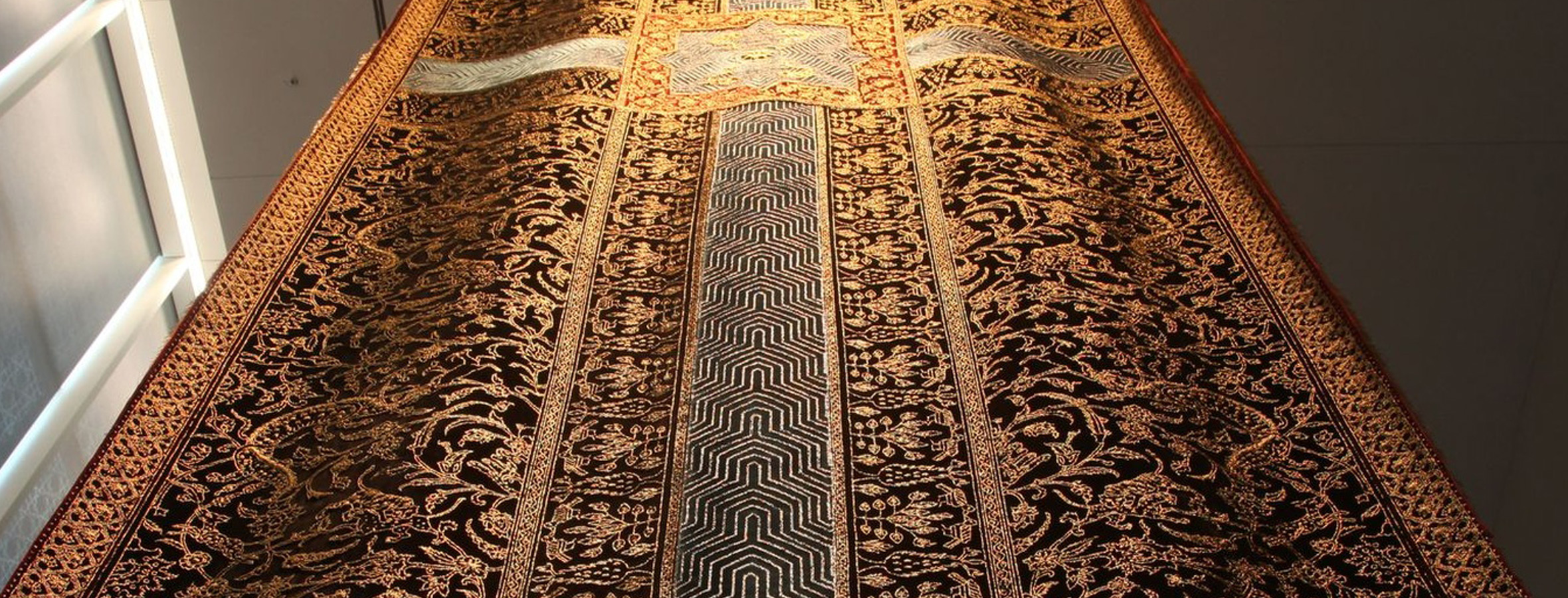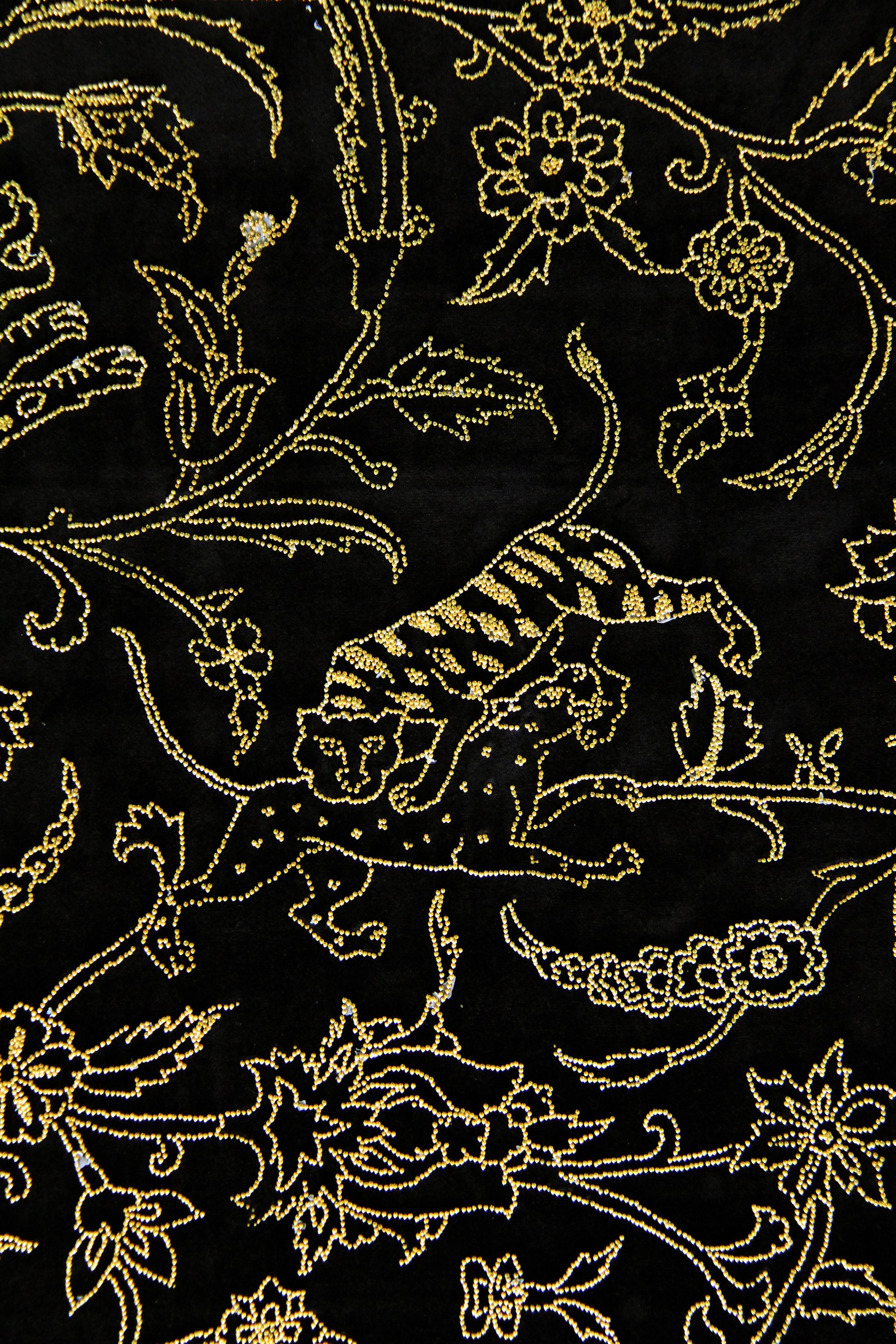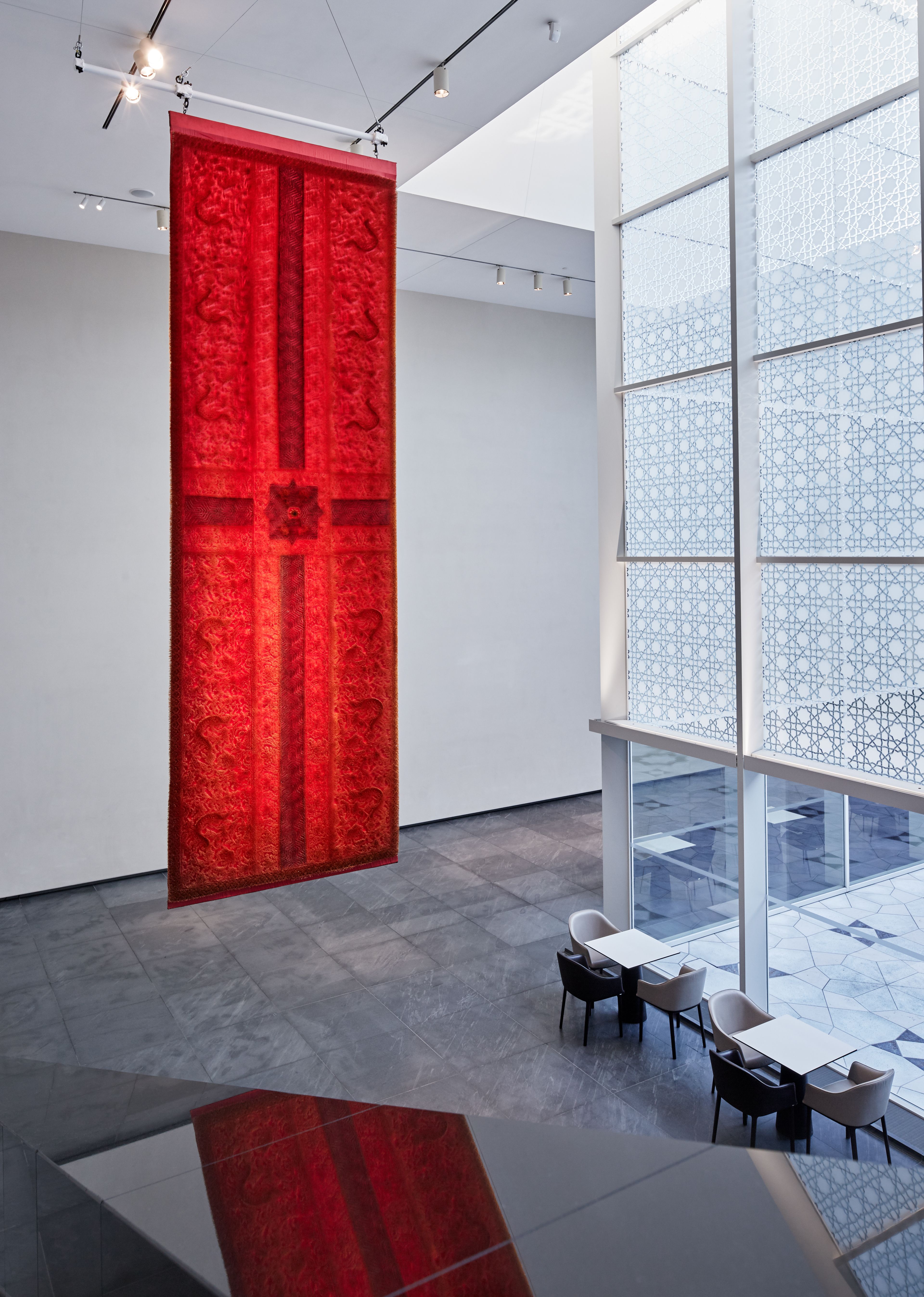
- Programs & Services
- Learning & Development
- Health & Wellness
- Faith & Traditions
- Economic & Financial Planning
- Community Engagement
- Support Services
- News
- Upcoming Events
- Watch Now
- Opportunities
- the.ismaili
- Feedback
- Login

1. An Artist at Work: Aisha Khalid’s Tapestry Journey
When Pakistani artist Aisha Khalid was commissioned to create a piece for a 2014 Aga Khan Museum exhibit about gardens, she was inspired to design a Persian carpet. Khalid created an extraordinary six-meter-long, double-sided tapestry with a chahar bagh image made of gold-plated pins. Its creation was a painstaking process: Khalid had to experiment with fabrics, seek out the particular pins she wanted to use, and insert each pin one by one. Approximately four months and 1.2 million gold-plated steel pins later, the tapestry—the first contemporary work acquired by the Museum—was complete. It weighs more than 100 kilograms.

2. Chahar Bagh: A Persian Notion of Paradise
The chahar bagh—a garden divided into four parts by waterways that meet in the middle—is an important symbol of paradise in Islamic gardens and art. The notion of the chahar bagh dates back to pre-Islamic Persia, “where the garden [was] thought of as an earthly representation of Paradise,” according to Dr. Michael Chagnon, an art historian and curator at the Aga Khan Museum. This idea was later “folded into Islamic notions of paradise” deriving from the Qur’an, where paradise is bordered by four rivers, he explains. The number four is symbolic of the order of the universe, incorporated into the cardinal directions of the world (north, south, east, west) and the basic elements of life (earth, water, air, fire). In Toronto, the Aga Khan Park’s chahar bagh physically connects two cultural institutions, the Aga Khan Museum and the Ismaili Centre, Toronto, promoting the reciprocity between spirit, art and nature.

3. Chahar Bagh: A Concept Dating Back to the Achaemenid Era
Chahar bagh-style gardens are believed to have been cultivated as early as the Achaemenid era, according to Chagnon. The chahar bagh has been represented throughout history in various ways, one way being the traditional garden format. Chagnon gave the example of Pasargadae, the garden palace built by Cyrus the Great during the Achaemenid Period, as archaeological evidence that this quadrilateral garden format was adopted in the pre-Islamic era. Another way, he said, are the paintings dating back to the Islamic era which depict people enjoying “courtly pastimes” in “garden-like landscapes.” A third way, concluded Chagnon, are the Islamic-era carpets woven in the late medieval and early modern periods that survive today which “imitate the design of a chahar bagh,” such as the Wagner Carpet, a monumental 17th-century Iranian carpet that highlights the link between paradise and gardens. Today, contemporary artists and architects are putting their own spin on the chahar bagh. One example is the Museum’s neighbouring Aga Khan Park, whose four-part garden was specifically designed to fit a North American context and climate.

4. Two Sides to the Story: How Khalid’s Art Pinpoints Her View of Our Contemporary World
Khalid’s double-sided tapestry showcases her interpretation of the chahar bagh while reflecting her beliefs regarding our contemporary world. On one side, the tapestry features a traditional chahar bagh. On the other, the artist explores socio-political themes in a striking jungle scene “where every stronger person is trying to trap the weaker one,” she states. Khalid invites viewers to contemplate the contrast between “the whole narrative of Heaven, garden and perfect life” and the struggles of everyday life. Its title—“Your Way Begins on the Other Side”—pays homage to renowned Sufi mystic Rumi, whose poetry suggested one can achieve spiritual enlightenment by rising above worldly issues.
With files from Malika Ladha.
The Making of Aisha Khalid’s Tapestry
This article originally appeared in the Summer 2020 issue of The Ismaili Canada.